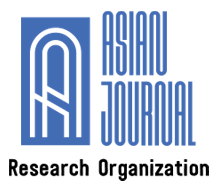Abstract
The study “Implementation of Inclusive Education Among Secondary Schools in Lingayen, Pangasinan, Philippines” examined how inclusive education is applied in public secondary schools and identified challenges faced by learners with disabilities. Despite existing national policies like the Inclusive Education Act and DepEd Orders, a gap remains between policy and classroom implementation. The research involved 33 junior high school teachers, selected through convenience sampling, and utilized a structured survey questionnaire with statistical tools such as frequency, percentage, average weighted mean, and Pearson Chi-square test. It assessed the level of inclusive education implementation in terms of academic progress, social and psychological support, and school physical facilities while also analyzing the extent of challenges teachers face. Findings revealed that while social and psychological support had the highest implementation, academic progress, and physical facilities were only moderately addressed, highlighting persistent difficulties. Key issues included the lack of trained SPED personnel, inconsistent school policies, large class sizes, insufficient training, and minimal parental involvement. Despite these difficulties, results showed no significant relationship between teachers' demographic profiles and the implementation level, indicating shared experiences across educators. The study emphasized the need for regular teacher training, improved resources, and stronger collaboration among school administrators, parents, and policymakers to enhance inclusive education. An intervention plan focusing on continuous teacher training, resource development, and stakeholder collaboration was recommended to bridge gaps and improve learning opportunities for differently-abled students.

This work is licensed under a Creative Commons Attribution 4.0 International License.
Copyright (c) 2024 Randy F. Soriano, PhD, Sheryn Q. Alcala, Mae Anne H. Castro, Robie May C. Escanilla
